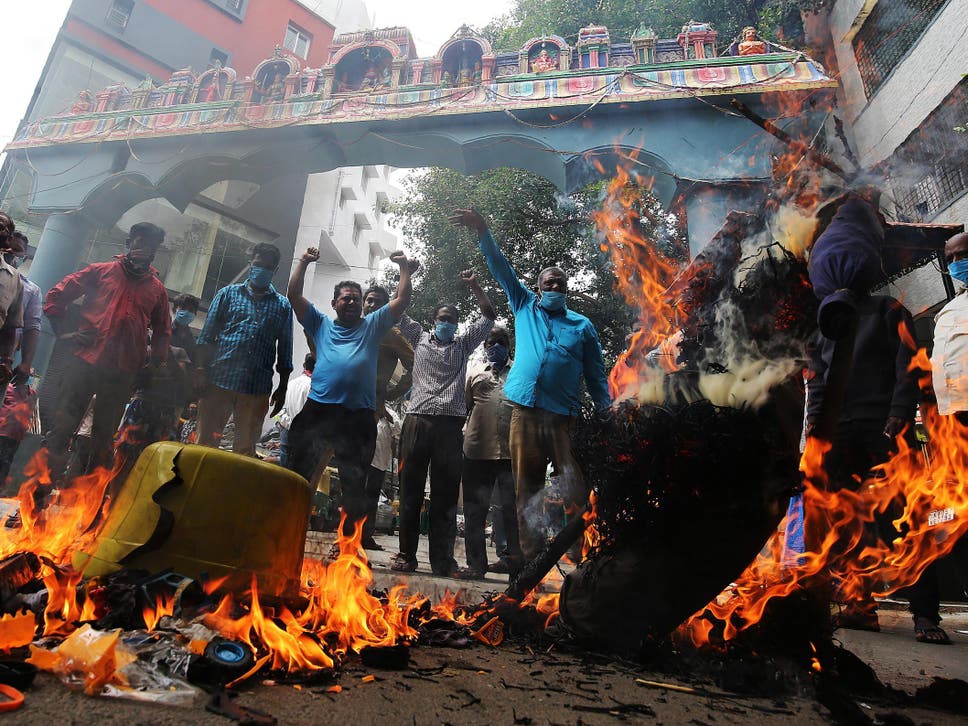SOURCE: INDEPENDENT UK

Tensions between India and China over their Himalayan border have simmered since late April when China sent thousands of soldiers into the Galwan valley in Ladakh, a disputed territory along the Line of Actual Control. The proximate cause for the dispute was India’s decision to upgrade its military installations in the disputed region. China responded by expanding a military airbase and building infrastructures in the region. Their refusal to leave the area triggered the disputes between the world’s most populous countries.
Last week, at least 20 Indian soldiers have died in a brutal hand-to-hand battle. China has refused to disclose any deaths on its side.
Such border skirmishes between China and India are not new. The two countries, which lack a demarcated border, fought in 1962 over the boundary between Aksai Chin and Ladakh and since then they are engaged in several small disputes. No bullets have been fired since 1975 across their border, but tensions have occasionally boiled over between the two nations. The two neighbours last engaged in a major dispute in 2017, when Indian soldiers moved into Bhutan, a small nation lying between the elephant and the dragon, to halt China’s plans to extend a vast road through a plateau known as Donglang in China and Doklam in India.
This time, however, there are growing concerns that recent border disputes may trigger a military conflict. It puts Nepal, which is sandwiched between the two neighbours, in a difficult diplomatic position.
A local saying describes Nepal as like “the grass lying between two elephants”; whether they fight or make love, it is the grass that will be trampled. These two global giants each have interests in Nepal; it is strategically important to both nations, and their brawl over domination in the Himalayan nation could worsen the existing dispute.
There are also new reasons for anxiety about the nation’s future in the light of this skirmish. Nepal recently issued a new political map, displaying the regions of Lipulekh, Kalapani, and Limpiyadhura as part of its sovereign territory, toughening its stance over a long-standing territorial dispute with India. Nepal’s parliament has also endorsed an amendment bill tabled by the government of Nepal to revise its map. India sees this move as making Nepal a proxy of China.
The Nepalese government’s bold move came after India built a road connecting India to China via Lipulek, as part of the Kailash-Mansarovar pilgrimage route. Nepal claims that this thoroughfare enters its territory. India rejected that claim; the Indian chief of army staff, General MM Naravane, said Nepal’s protest against an Indian road was at the behest of someone else, hinting that Nepal was acting on China’s behalf. The government of Nepal, led by KP Sharma Oli, is considered close to China.
China’s growing influence in Nepal has stirred widespread inside India. In recent years, China has pumped into millions of dollars into hydropower projects and infrastructure. During the visit of Chinese president Xi Jinping to Nepal in October last year, China pledged almost $500m in financial assistance to the Himalayan nation.
Meanwhile, Indian-Nepalese relations have soured in recent years. In 2015, India imposed an unofficial blockade along the border when signalling its unhappiness with the newly released democratic constitution of Nepal. This blockade has opened the door for China, its northern neighbour in the Himalayan nation. And the communist government of Nepal has attempted to move away from dependence on India, its southern neighbour, by warming up its rival: China.
This may be the reason that India sees the dispute of Nepal and India over Kalapani as a sub-plot to broaden the China-India border skirmishes. India even sees Nepal as a proxy of China in a recent move to publish its new map.
Neutrality is the best option for a landlocked country like Nepal, but great nations can easily drag smaller territories into their bigger disputes.
If India and Nepal do not rapidly resolve their own border issues through constructive dialogue, the risk for Nepal is great: it will find itself being played as a pawn in the far bigger fight between China and India.
from Indian Defence Research Wing https://ift.tt/31ed8J9
via IFTTThttp://idrw.org
No comments:
Post a Comment